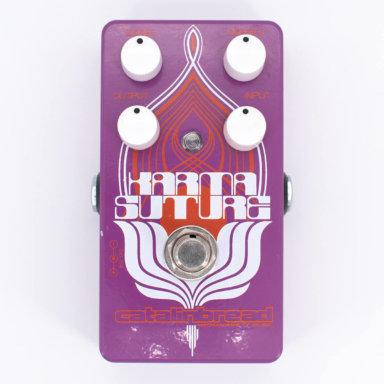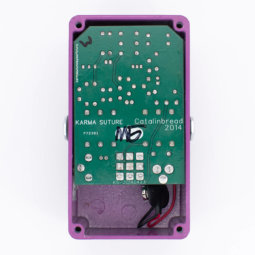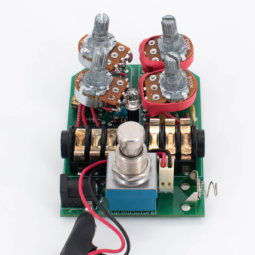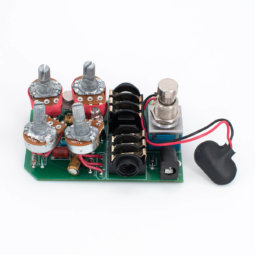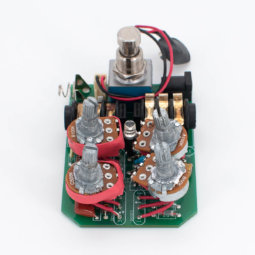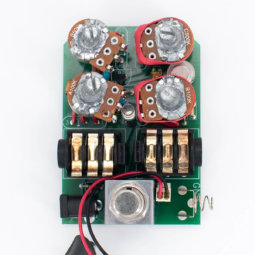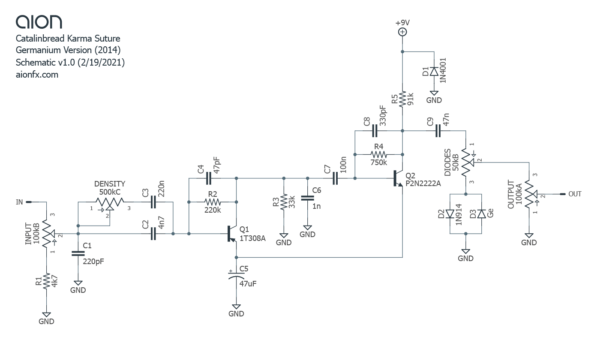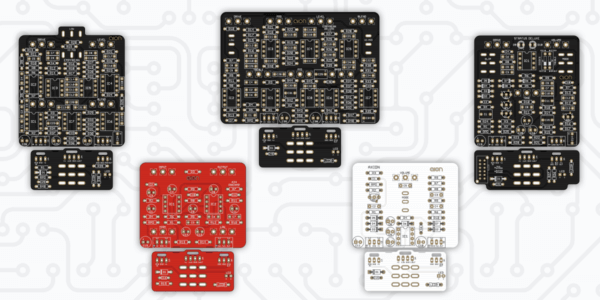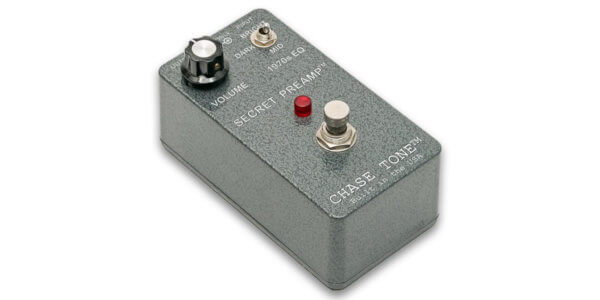
Tracing Journal: Catalinbread Karma Suture (Germanium & Silicon)
The Karma Suture is Catalinbread’s take on the Interfax Harmonic Percolator, a unique and extremely rare fuzz/drive from the early 1970s. As with most of their pedals, they don’t settle for straight clones, instead using classic circuits as a starting point to create something new.
In this case, there are actually two different Karma Sutures: the original germanium circuit, released in 2014, and an all-silicon version that followed in 2016. Both versions are active products, sold at the same retail price, and the silicon is not an update or a replacement for the germanium version. Think of them as fraternal twins with completely different personalities.
Here’s a demo of the original Karma Suture from 2014:
And here’s the silicon version:
While the original Harmonic Percolator has been studied extensively, nobody’s ever taken apart either version of the Karma Suture. We decided to crack it open and do what we do.
Karma Suture Germanium
Tracing photos
Schematic
Karma Suture Silicon
Tracing photos
Schematic
Analysis
As you can see, pretty heavily based on the Percolator. They’ve added an input capacitor blend control (called Density), which is a pretty common addition to vintage fuzz circuits, and something that Catalinbread has used on a few of their other effects such as the Katzenkönig, Sabbra Cadabra and Naga Viper.
The next addition is the control for the clipping diodes. I’ve never seen anything quite like this, but it’s a neat trick. It’s wired as a sort of reverse volume control that gradually blends in the clipping diodes. The lowest setting puts 50k resistance in series with the diodes to ground, making them have very little effect, and as it’s turned up they gradually have more and more effect. (It’s pretty common to wire a potentiometer as a series resistor with the diodes, but I’ve never seen it done as a true voltage divider like they’ve done here, using all three lugs.)
Other than these two controls, we’ve got several value tweaks to change the EQ and the bias points of the transistors, as well as tweaks to the clipping diodes. You can tell they started with a Percolator on the breadboard and swapped components until they arrived at something they liked. They ended up with a smash hit, well worth your time even if you’ve already built a Percolator.
I was surprised that I actually preferred the silicon version. It’s a bit easier to build since you don’t have to hunt for an old-stock germanium transistor, but it’s by no means a compromise despite the lack of obsolete parts.
Neither version is terribly high gain, only approaching fuzz territory due to the rough-around-the-edges transistor clipping. If you’re looking for an uncontrollable oscillating noisemaker, keep looking. But if you want a smooth, harmonically-rich drive with a vintage flavor, give the Karma Suture a try!
Looking through the photos, you can also see the major shift in Catalinbread’s build process despite the similarity of the circuits. They’d been hand-wiring the potentiometers this way since at least 2009 with the original Dirty Little Secret, but at some point between 2014 and 2016 they moved to this new method of using 9mm PCB-mounted pots with a sub-board connected by ribbon cable. Much more efficient in the long run.
One other interesting thing: note the complete lack of any filtering on the power input. It clearly works OK without it, but I just wanted to note that this is not a mistake in the trace. There’s a polarity-protection diode, but that’s it!
Calliope Vintage Fuzz
 As always, our version of the Karma Suture is releasing today as well. The Calliope Vintage Fuzz is a direct adaptation of the Karma Suture, and either version can be built on the PCB. It includes footprints for Soviet “GT” series germanium, standard germanium (including Soviet MP series), or silicon in the Q1 position so you don’t have to contort any transistor legs. We’ve also added some standard power filtering because it didn’t feel right to leave off.
As always, our version of the Karma Suture is releasing today as well. The Calliope Vintage Fuzz is a direct adaptation of the Karma Suture, and either version can be built on the PCB. It includes footprints for Soviet “GT” series germanium, standard germanium (including Soviet MP series), or silicon in the Q1 position so you don’t have to contort any transistor legs. We’ve also added some standard power filtering because it didn’t feel right to leave off.

